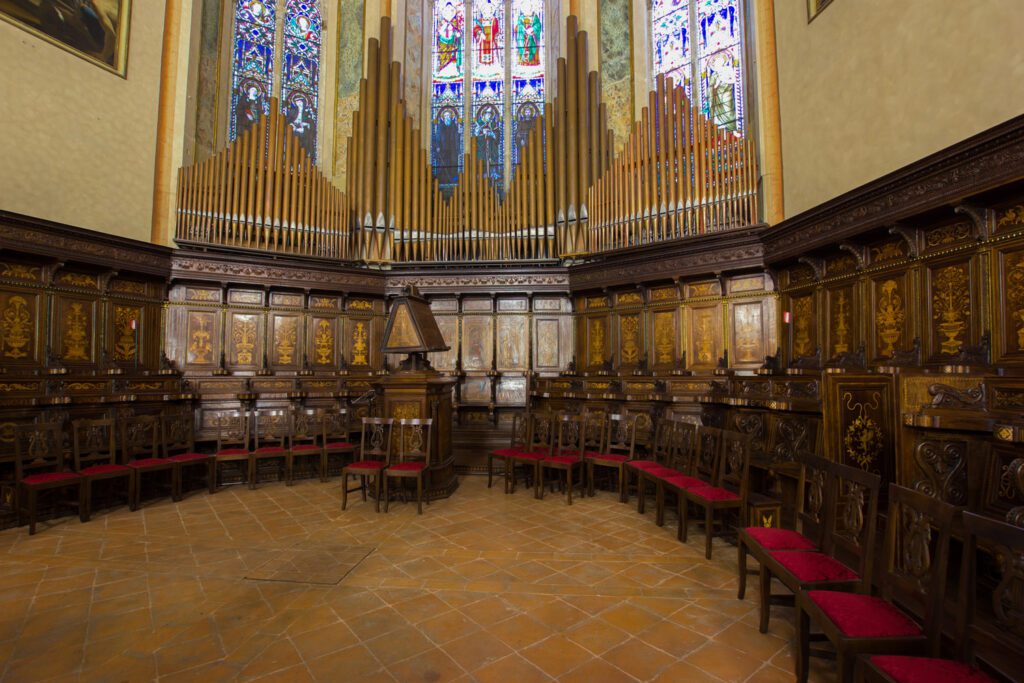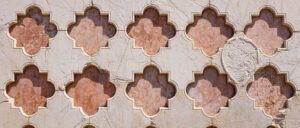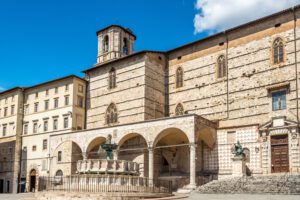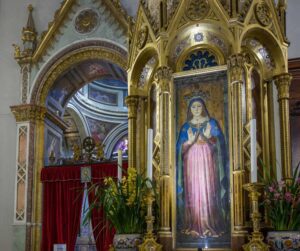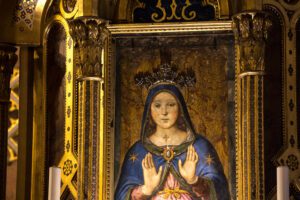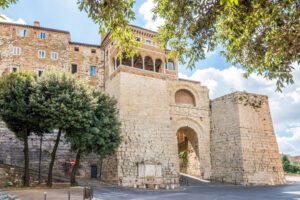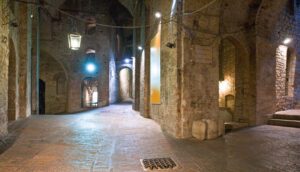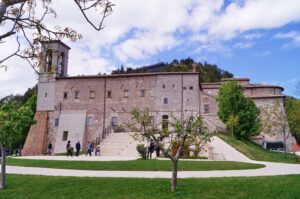A Cathedral to Welcome Them All
The current Cathedral of Saint Lawrence replaced an older church, a Romanesque church, that therefore must have been built in the 12th century. In March 1300, the Communal authorities in a plenary session – after ascertaining that the size of the Romanesque cathedral did no longer fit the needs of Perugia, then in a phase of expansion – decided to start a new building from zero: a bigger one, and in the same place as the older. The architect chosen for this new, important public enterprise was Fra (Brother) Bevignate, a Benedictine monk of the Order of Saint Sylvester. He was also entrusted with some of the most meaningful monuments of Medieval Umbria, such as the Great Fountain and the aqueduct in Perugia, and the Orvieto Cathedral
The Job of Centuries: The Cathedral of Saint Lawrence’s Outside
The outside of the cathedral– that scenically delimits one side of the main square, Piazza IV Novembre –provides a clear summary of its many architectural phases. The most obvious of which started during the Renaissance, in the mid-15th century. As a consequence of this building process, that would continue for more than a century,the long side of the Cathedral of Saint Lawrence surprises with its “unfinished” look. See for example the area in white and rose tiles, that only covers the lowest section of the wall; or the 1568 gate, in the style of Mannerism.
Specimens of the Medieval phase are also recognizable, for example the polygonal base of the belfry, that can be seen under the Loggia, on the left of the cathedral gate that opens on the square. Above this entrance stands up a wood Crucifix that has remained on display there since 1540, during the war between Perugia and Pope Paul III. On the right of the gate, a pulpit hangs that, according to tradition, was used by a famous 15th century preacher, Saint Bernardine of Siena – though they probably assembled wood stages on such occasions. It is embellished with marble slabs that were probably retrieved from the old Medieval cathedral.
The actual façade of Saint Lawrence’s Cathedral faces Danti Square, on the short side of the building. It has a late Baroque gate made in 1729. On the staircase, a wonderful 1553 monument portrays Pope Julius III. It is the work of an important Mannerist sculptor, Vincenzo Danti (Perugia, 1530-1576). Julius III is the one who re-established the magistrature (local authorities) in the town, that had been suppressed after the so-called “war for the salt” against the Papacy in 1540.
The Cathedral of Saint Lawrence’s Interior, Barocci to Perugino
The church interior strikes because of its largeness, the light effects from the double-arched windows (set high, and decorated with glasses painted in different epochs), and the vertical flight of its pillars; the whole of it being counterbalanced by a 15th century structure. The Perugia Cathedral is usually considered, with a German technical term, a Hallenkirke, a “hall-church,” a pattern very frequently used north of the Alps. Basically, the central nave and the two lateral naves have the same height. The general shape of Saint Lawrence’s Cathedral belongs to the 15th century with reference to its structure, and to the 18th century because of the frescoes in the vaults. Not much is left of the Renaissance, whose elements were mostly removed during the restoration process launched in the 19th century by the then bishop, Gioacchino Pecci (1810 – 1903), who would become Pope Leo XIII.
On entering from the main gate, i.e. the one from Danti Square, two important chapels appear. The one on the right, dedicated to Saint Bernardine, is enclosed by a wonderful iron railing; the chapel on the left is dedicated to the Sant’Anello (Holy Ring).
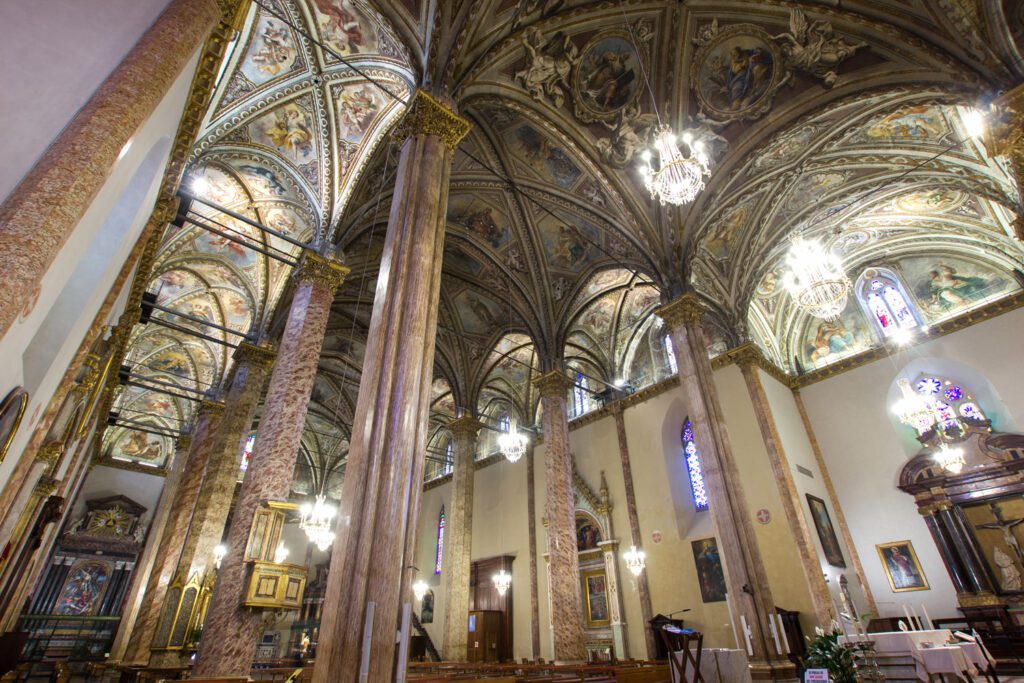
The Chapel of Saint Bernardine
The Chapel of Saint Bernardine includes one of the most important paintings in Perugia, the Descent of Christ from the Cross by Federico Barocci(Urbino, 1535 – 1612), a major exponent of Mannerism. A composition quite complex but, at the same time, symmetrical thanks to the cross in the middle and the two ladders making a triangle, it impresses with the agitated attitudes of the characters, and the extraordinary quality of its colors.
The Chapel belongs to the Collegio della Mercanzia (College of Merchants), one of the main guilds/associations in Perugia, which, starting from the Middle Ages, dealt with the commerce of wool clothes. Their emblem, to be seen on the external side of the stone front, is easy to spot thanks to the Griffin – the town’s symbol – upon a roll of fabric.
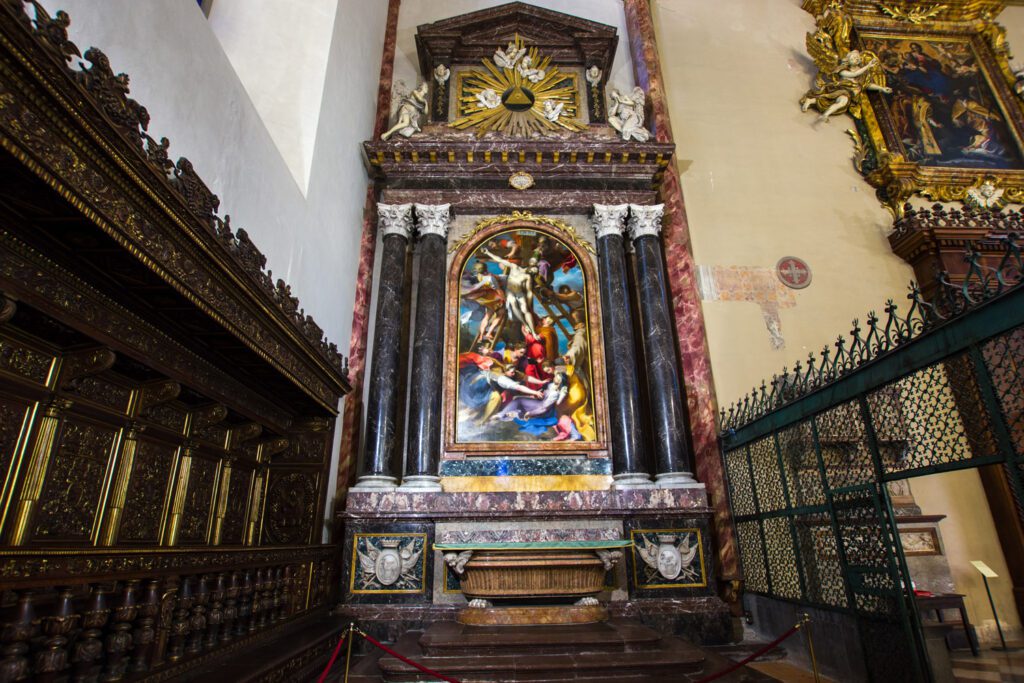
The Chapel of the Holy Ring
The chapel on the left of the entrance door is dedicated to Saint Joseph, and keeps the famous “Holy Ring” (Sant’Anello). A true ring made in “hard stone,” i.e. chalcedony, according to traditional devotion it was the one used for the wedding of Virgin Mary and Joseph of Nazareth.
The ring came to Perugia in 1473, in a time of great social unrest, brought by a friar of German origins, Winter from Mainz, who had allegedly stolen it in Chiusi, Tuscany. The arrival of this artifact was welcomed with great excitement; from then on, it is publicly shown twice a year (July 28 and September 12) together with its beautiful reliquary, shaped like a shrine. It descends from above the altar by virtue of a very scenic device of the 18th century.
The altarpiece currently on the altar, precisely The Wedding of Mary and Joseph, was painted by Jean-Baptiste Wicar (1762 – 1834) as a replacement for the altarpiece on the same subject that had been painted by Perugino, and was smuggled by Napoleon – now on exhibition at the Caen Museum in France.
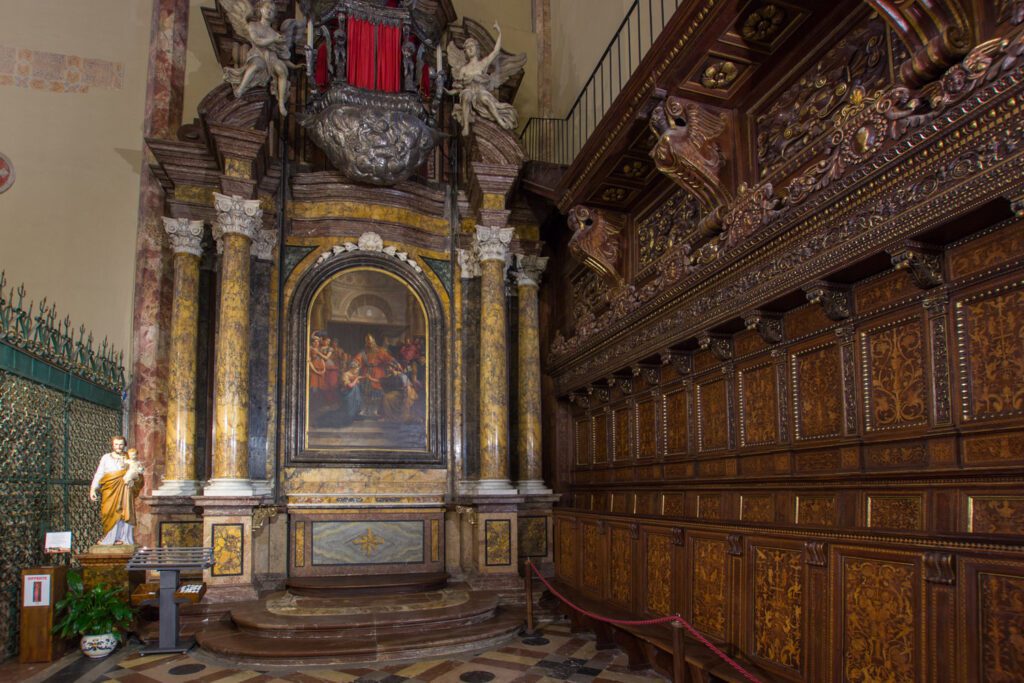
Marian Devotion in Perugia: the Mother of Divine Grace
In the middle of the nave, on one of the pillars the picture of the Madonna delle Grazie (Our Lady of Divine Graces) can be seen, the object of heartfelt, centuries-old devotion. The painting, a fresco, shows Mary pregnant, with her hands lifted and open toward us as a sign of acceptance, as the intermediary between human needs and Jesus. The artist is not known for certain; some scholars ascribe it to Pietro Vannucci “il Perugino,” while others to one of his pupils, Gian Nicola di Paolo. Anyway, it must be dated about 1515.
More Works Worth a Look in the Cathedral
In the right nave there is the Chapel of Saint Onuphrius, where the altarpiece by Luca Signorelli (1445 circa – 1532) was set, now in the Chapter Museum adjoining the Cathedral of Saint Lawrence. The original 15th century chapel is no longer recognizable since it was completely remade in 1877, embellished with fine paintings by Domenico Bruschi (1840 – 1910).
In the farther area of the main nave, behind the high altar, you will admire the inlaid wooden choir. The work of Giuliano da Maiano and Domenico del Tasso, signed and dated 1491, it is one of the masterpieces of Renaissance marquetry. Unfortunately, about a third of it was damaged by a fire in 1985 and has been restored with painstaking care by experts of high craftsmanship.
In the left nave, above the altar of the Gonfalone (official town standard), you can see a painting that was made in order to be carried in a procession as a spiritual defense against the frightening plague of 1526. It was painted by Berto di Giovanni (available data from 1488 to 1526), a pupil of Perugino. The Gonfalone painting is especially interesting insofar as it shows Perugia’s skyline full of towers. That was what the town looked like before the Rocca Paolina was built – the fortress (Rocca) willed by Pope Paul III, that completely modified a whole area of old Perugia.
